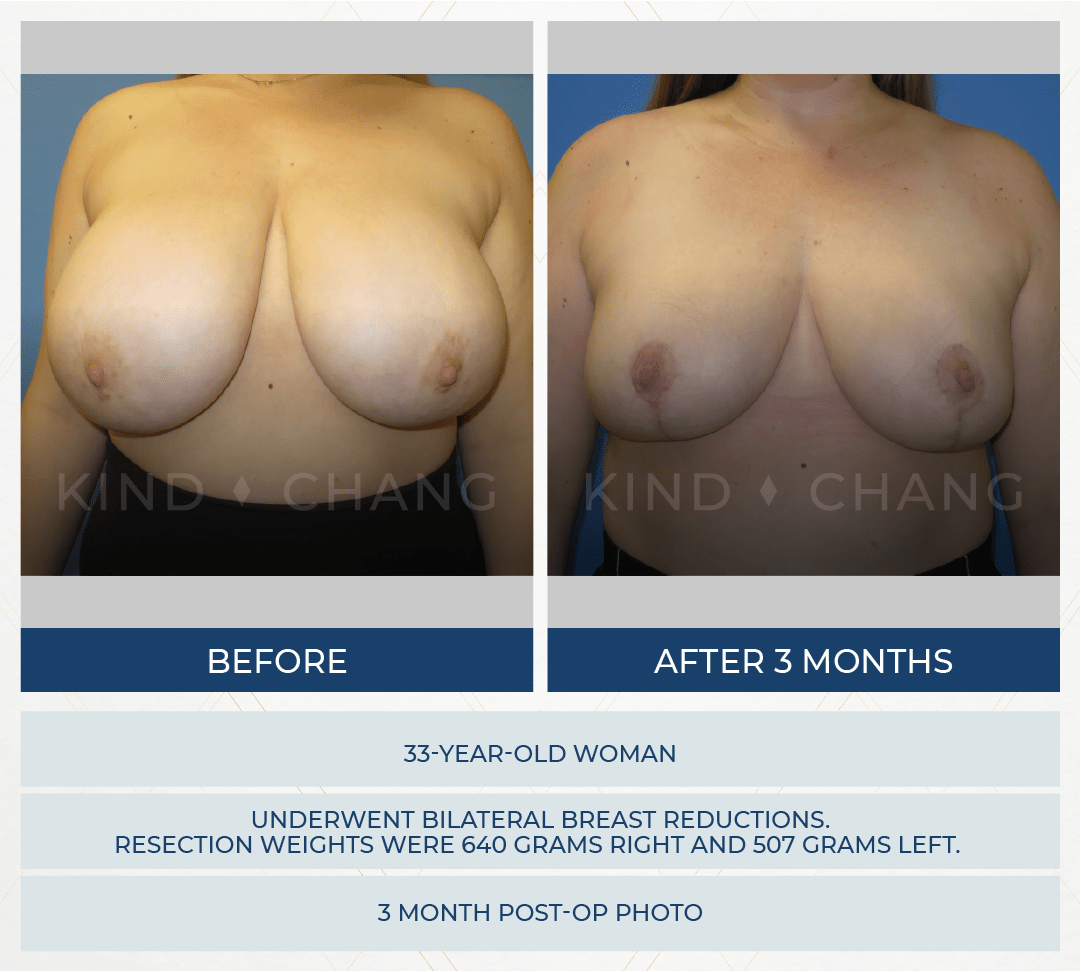
Breast reduction surgery, also known as reduction mammoplasty, is a surgical procedure designed to reduce the size of the breasts and reshape them to achieve a more proportionate and aesthetically pleasing appearance. This surgery involves removing excess breast tissue, fat, and skin, making them smaller, lighter, and perkier. It can also reduce the size of the areola, the darker skin surrounding the nipple. The goal is to give the patient smaller, better-shaped breasts in proportion with the rest of her body.
While breast reduction is often associated with alleviating physical discomfort and health issues such as back pain, neck pain, and shoulder pain from bra straps, it can also be sought for cosmetic enhancement purposes. Breast reduction can enhance the breast’s shape and improve symmetry. The procedure is tailored to the individual’s needs and goals, providing both functional relief and cosmetic improvement.
Benefits of Breast Reduction
Breast reduction offers significant benefits, including relief from physical discomfort like chronic back, neck, and shoulder pain. It can improve posture and eliminate skin irritation beneath the breasts. The surgery often enhances the ability to engage in physical activities and exercise comfortably. Beyond physical benefits, breast reduction can boost self-esteem and body image, providing psychological and emotional relief.
Women with very large breasts may experience a variety of medical problems caused by the excessive weight-from back and neck pain and skin irritation to skeletal deformities and breathing problems. Bra straps may leave indentations in their shoulders. Large breasts can make a woman of any age feel extremely self-conscious. Breast reduction surgery has been shown to improve both those issues as well as the physical symptoms.
Treatment Process
The breast reduction treatment process begins with an initial consultation with your plastic surgeon. During this consultation, the surgeon evaluates the patient’s medical history, breast anatomy, and specific concerns. The patient discusses their goals, and the surgeon explains the procedure, including incision options and potential risks. Pre-operative instructions often include stopping certain medications, avoiding smoking, and arranging for post-surgery care. On the day of surgery, the patient is administered anesthesia for comfort. The surgeon makes the necessary incisions, removes excess tissue, reshapes the breast, and repositions the nipple and areola. After closing the incisions with sutures, the patient is taken to a recovery area for monitoring.



Q: Will I have scarring?
A: The operation creates a scar around the areola, down the front of the breast, and occasionally in the fold under the breast. These scars are permanent, but usually fade over time. Despite these scars, women who undergo breast reduction surgery are among Dr. Kind and Dr. Chang’s happiest patients.
Q: What is the recovery time after breast reduction?
A: Most patients can return to work and light activities within one to two weeks, but should avoid strenuous activities and heavy lifting for about four to six weeks. Full recovery and final results can take several months.
Q: Are there risks associated with breast reduction?
A: As with any surgery, there are risks, including infection, bleeding, scarring, changes in nipple or breast sensation, and asymmetry. Choosing an experienced surgeon and following post-operative care instructions can help minimize these risks.





DISCLAIMER: Before and after results are NOT a guarantee that your results will be the same or similar. Each patient’s results will be different. Your results will vary from other patient’s results.
